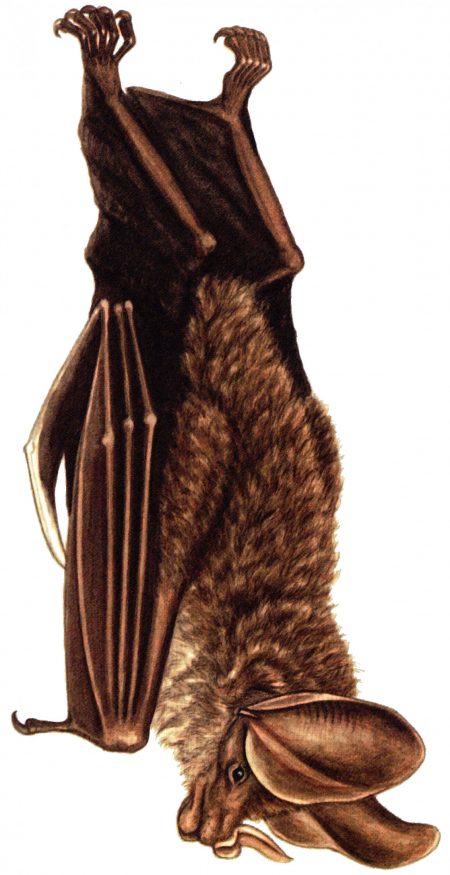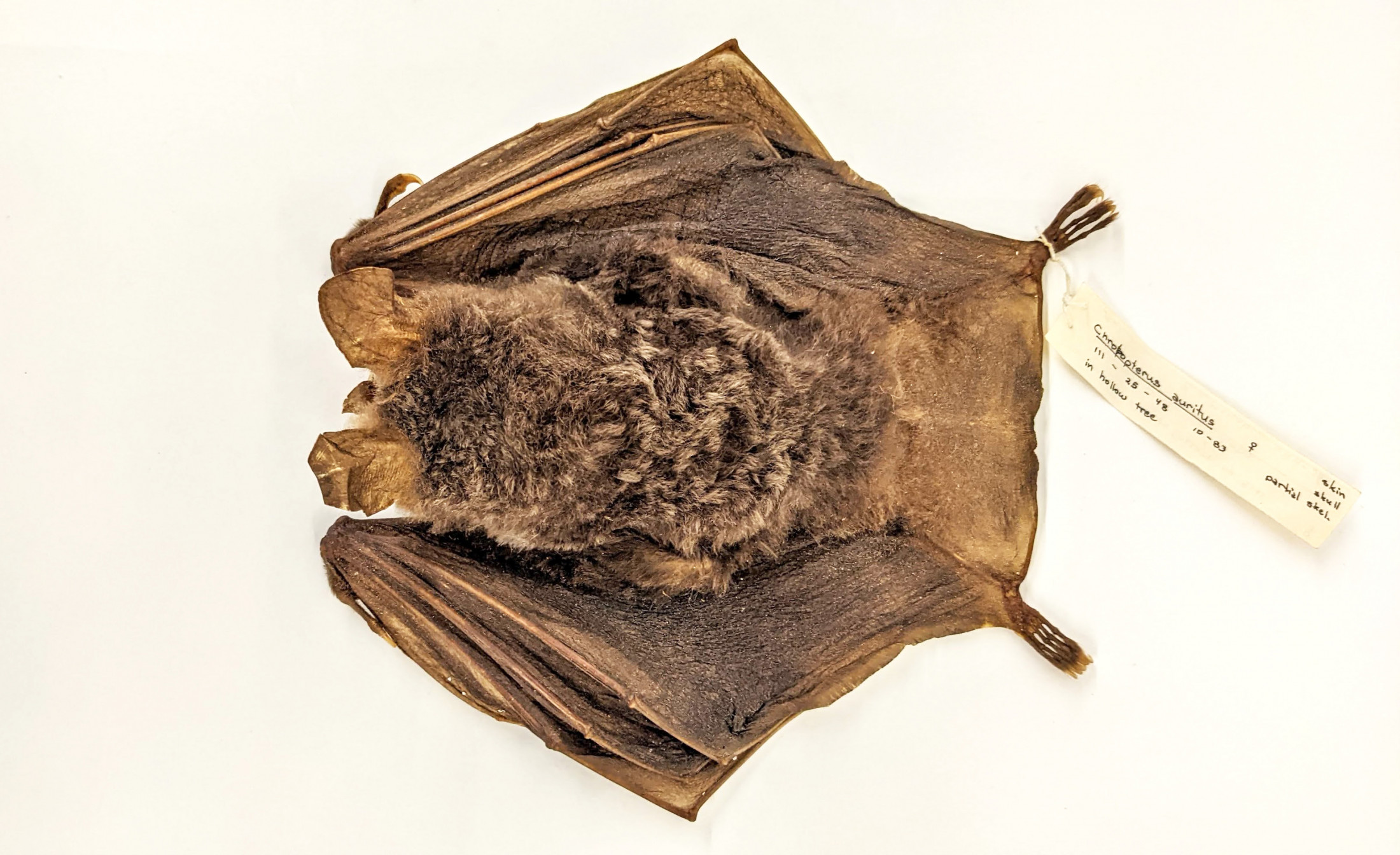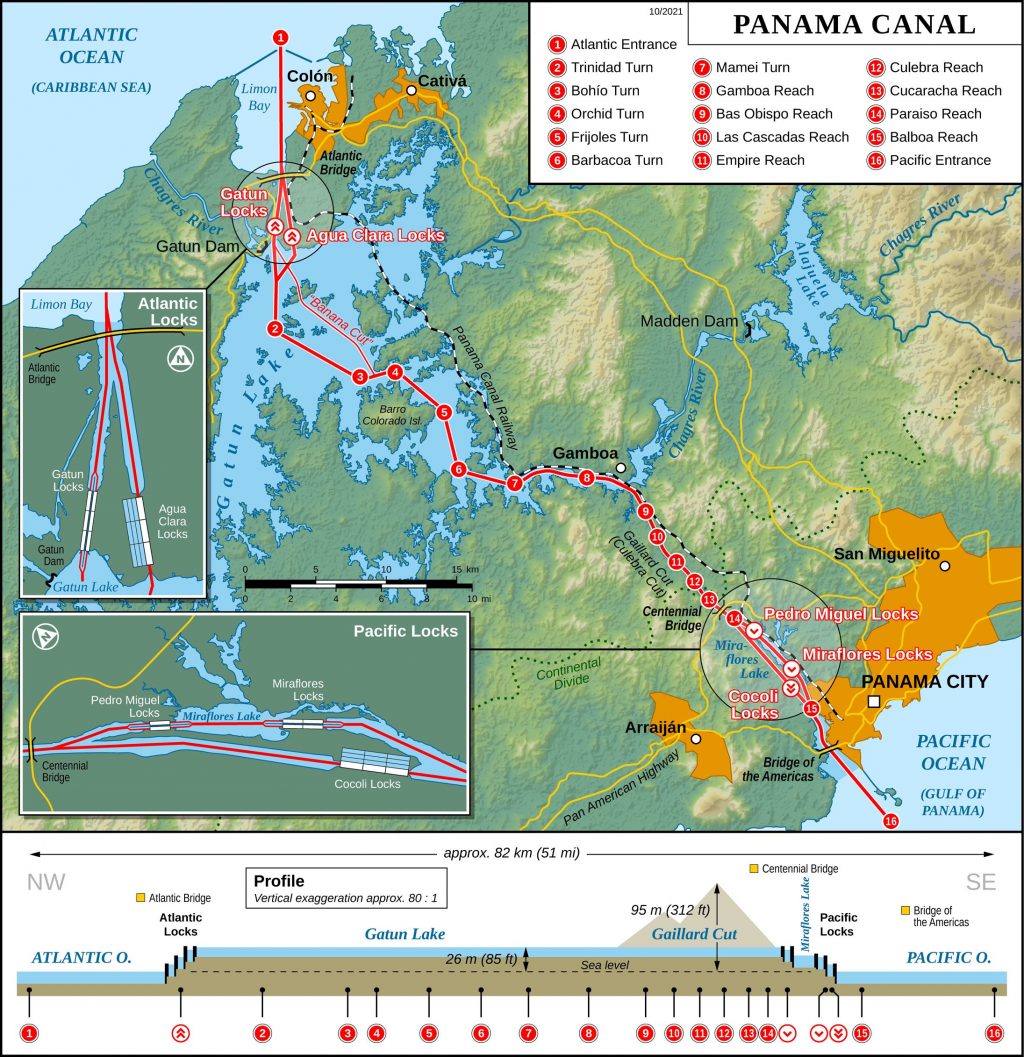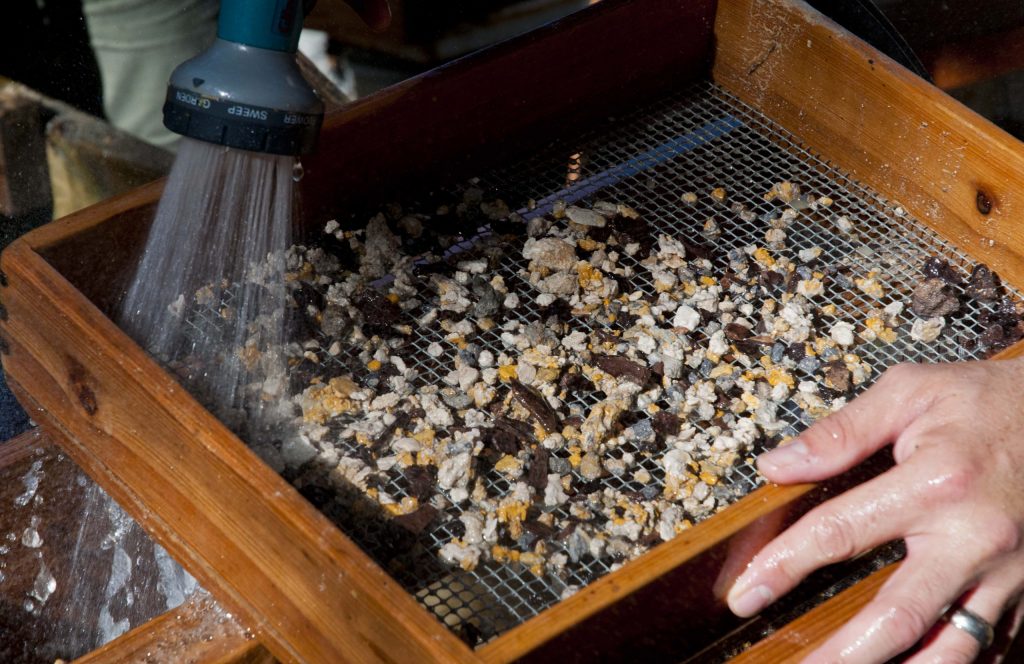Most bats patrol the night sky in search of insects. New World leaf-nosed bats take a different approach. Among the more than 200 species of leaf-nosed bats, there are those that hunt insects; drink nectar; eat fruit; munch pollen; suck blood; and prey on frogs, birds, lizards and even other bats. They’re among the world’s most ecologically diverse mammals, and until recently, it was thought they originated in South America.

Illustration courtesy of Fiona Reid, from “A Field Guide to the Mammals of Central America and Southeast Mexico"
“The theory that people have proposed is they got into South America early on, where their only competition was from insect-eating bats. So they evolved a bunch of different feeding strategies,” said Gary Morgan, curator of vertebrate paleontology at the New Mexico Museum of Natural History.
A new discovery suggests the story may be more complicated. In an article published by the Journal of Mammalian Evolution, Morgan and his colleagues describe the oldest-known leaf-nosed bat fossils, which were found along the banks of the Panama Canal. They’re also the oldest bat fossils from Central America, preserved 20-million years ago when Panama and the rest of North America were separated from southern landmass by a seaway at least 120 miles wide.
Based on these and other fossils, Morgan thinks previous studies may have singled out the wrong continent as the birthplace of leaf-nosed bats.
“We think they may have had a northern origin.”
Once-in-a-century opportunity leads to several new discoveries
In 2007, hundreds of engineers, excavators and geologists gathered in Panama to begin the daunting task of widening and deepening the country’s historic canal. Paleontologists weren’t far behind. After the work crews used dynamite to blow apart sections of the bank, researchers moved in, picking out fossil fragments from the rubble. The bones held clues to one of the greatest mass migrations of animals in Earth’s history, and the canal expansion marked the first time anyone had this close of a look.
About 5 million years ago, shifting tectonic plates erected a land bridge between North and South America. After more than 100 million years of separation, animals in the northern hemisphere could freely trek down south and vice versa.
“Animals like sloths and armadillos came north, while horses, tapirs, bears and elephants went south,” said study co-author Bruce MacFadden, curator of vertebrate paleontology at the Florida Museum of Natural History. The event is referred to as the Great American Biotic Interchange, and it helped shape the present-day distributions of innumerable plants and animals on the American continents.
Had the Panama Canal not been constructed, it’s likely this event would still remain a mystery to scientists.
“That showed the Panama Canal Basin, which was part of North America at the time, was full of the kind of mammals you would have found in Nebraska or Florida rather than South America,” said Jonathan Bloch, curator of vertebrate paleontology at the Florida Museum.
Rare fossils provide clues to the origin of leaf-nosed bats
Nearly all animals found in fossil beds of similar age near the canal zone represent the southernmost range of species from higher latitudes. There were bear dogs; miniature horses rhinos; camels; early relatives of modern hippos; ungulates with paired antlers protruding from their heads and snouts; and at least one species of chalicothere, a bizarre chimeric animal that resembled a sloth crossed with a horse grafted to a giraffe.
Florida Museum illustration by Danielle Byerley
The first mammal from South America discovered in the older beds was from a primate species, which is presumed to have rafted across the seaway.
The leaf-nosed bat is the second South American mammal found at the site. This may suggest that animals were better at crossing the oceanic barrier than previously assumed. The seaway separating North and South America was five times wider than the modern Strait of Dover between England and France and 15 times wider than the Strait of Gibraltar that divides Europe from Africa.
Yet other animals seem to have had little trouble making the journey. The list of non-mammalian animals that made their way from south to north includes a boa constrictor, a crocodile and frogs. There’s little doubt about where these organisms came from, but the fossil record of leaf-nosed bats is more ambiguous.
Today, leaf-nosed bats are distributed from South America through Arizona. Although they’ve been around for 20 million years or more, they’ve left behind surprisingly few fossils. Three extinct species in this family of similar age to the Panama specimen have been found in Colombia, and the fossils of much younger vampire bats were pulled from several sinkholes in Florida. Beyond that, there isn’t much for paleontologists to go on.

Florida Museum photo by Jerald Pinson
Zooming out, things become even hazier. Fossils from two closely related families that have been found in Florida predate South American leaf-nosed bat fossils and those of their relatives by 10 million years.
Further fossil discoveries will be needed to determine where leaf-nosed bats came from and why they developed such varied and refined appetites. Fortunately, there’s no shortage of fossils from the canal. Though the expansion project lasted only nine years, paleontologists collected enough material to keep them busy for the foreseeable future.
“Time was of the essence, so we collected fossils much more rapidly than we could have done the science,” Bloch said. “There are probably fossils from the project that will be described 50 years from now.”
Nicholas Czaplewski of the Oklahoma Museum of Natural History, Aldo Rincon of the Universidad del Norte and Aaron Wood of Iowa State University are also co-authors on the study.
Funding for the study was provided by the National Science Foundation (grant no. 0966884).
Sources: Gary Morgan, gary.morgan1@dca.nm.gov;
Jonathan Bloch, jbloch@flmnh.ufl.edu;
Bruce MacFadden, bmacfadd@flmnh.ufl.edu
Media contact: Jerald Pinson, jpinson@flmnh.ufl.edu, 352-294-0452


